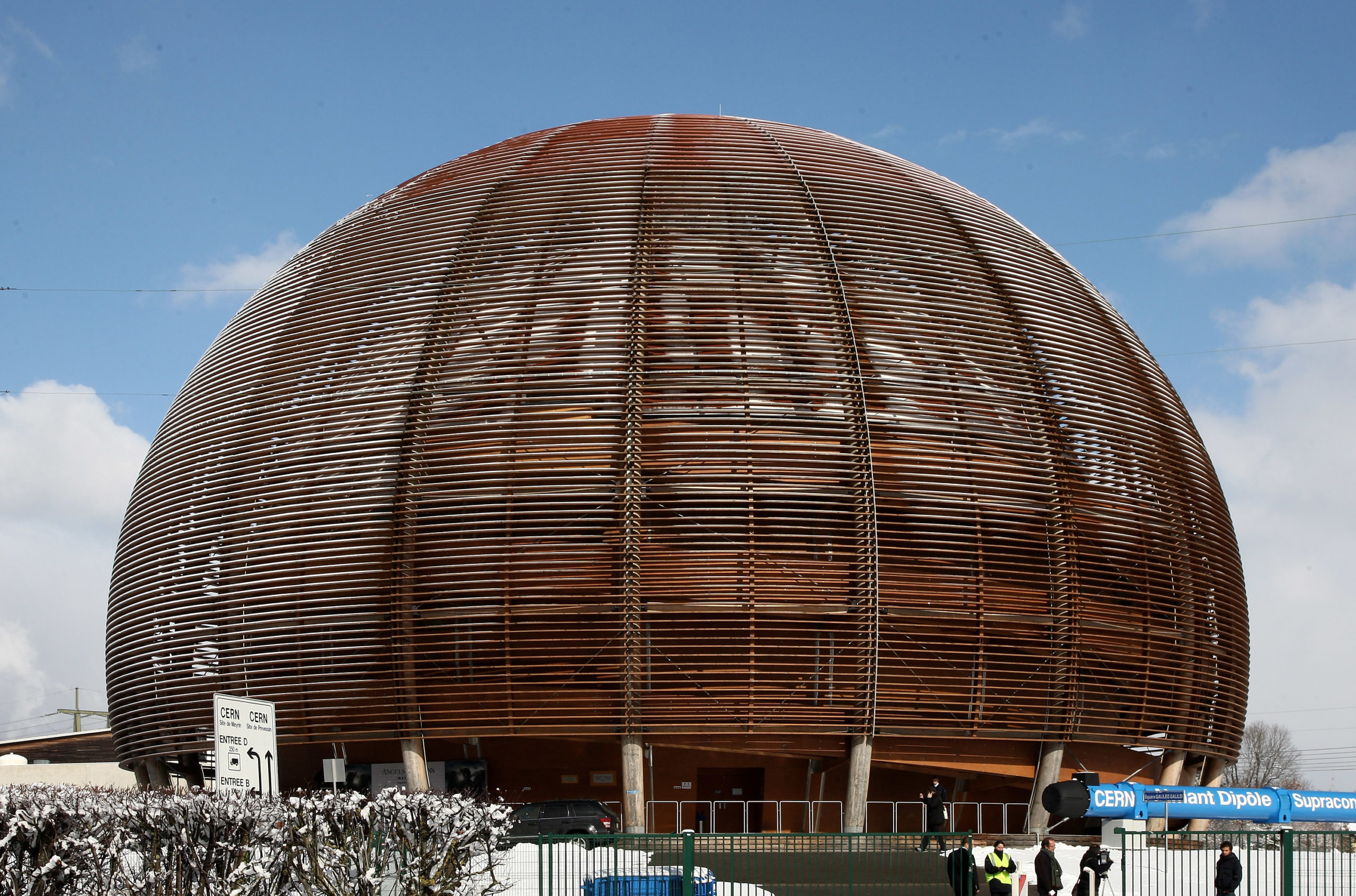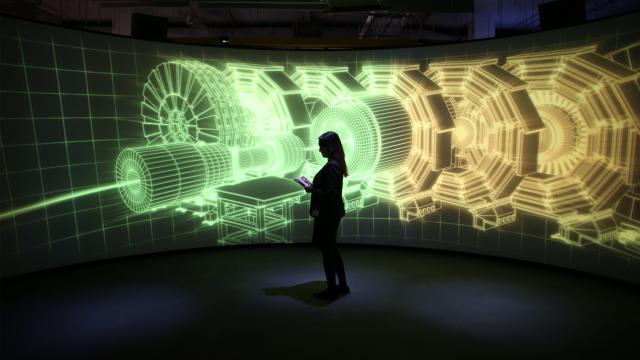What do art and high-energy physics have in common? Quite a bit, if you think about it: Space, time and the structure of the visible and invisible world, for starters. That’s why CERN has spent the past four years inviting artists into its headquarters, and why, for the first time, it’s now inviting an architect to stay.
Back in 2011, CERN set up a program called Collide@CERN that allowed artists to apply for a residency at its Swiss headquarters. “We believe that particle physics and the arts are inextricably linked: both are ways to explore our existence — what it is to be human and our place in the universe,” explained the program’s director, Ariane Koek, at the time. “The two fields are natural creative partners for innovation in the 21st century.”
The program’s first participant was the artist Julius von Bismarck, who CERN paired with the theoretical physicist James Wells — who studies everything from dark matter to the notion of extra dimensions. Together, the pair made some incredible installation art — and carried out projects that even involved other CERN scientists, including, in CERN’s words, “locking 30 physicists underground and asking them what they saw in the dark.” One work that came out of the collaboration was an installation in which a group of lamps swing out of unison for dozens of revolutions, but then, at the 78th turn, come back into a matching rotation:
The idea isn’t to lighten up the mood at CERN, exactly, but to introduce new and unexpected ideas into the morass of in-depth research going on at its headquarters. Science, the thinking goes, cannot exist in vacuum — and neither can art. Both scientists and artists prosper when they’re exposed to perspectives outside of their own conventions. So why not put them together for an intensive bout of making at the world’s foremost research facility for high-energy physics?
Since Bismarck’s first residency, the CERN program has expanded to include a number of other areas of the arts, including sound sculptor Bill Fontana — who collaborated with a cosmologist to record the acoustic vibrations created in the Large Hadron Collider and other areas of CERN. You can hear Fontanta’s experiments here:
Of course, installing artists for months at CERN costs money, and in 2013, a new program was created that allows countries to sponsor specific residencies within its labs. Called Accelerate@CERN, the program allowed Switzerland to sponsor a digital artist and Greece to sponsor a visual artist.
This year, the program is expanding even further: It’s looking for an architect sponsored by Austria and two digital performance artists or dancers sponsored by Taiwan. It sounds like it will be an incredible month: The winners will be introduced to all of the operations at CERN, including “the theoretical engagement with notions of time and space, as well as the practical cutting edge engineering and working with materials, which the laboratory engages in.” They will be paired, like previous winners, with a physicist from CERN that will participate and react to the work.

CERN’s Globe of Science and Innovation, designed by Groupe H Architects. Vittorio Zunino Celotto/Getty
To me, it’s particularly interesting that CERN will host an architect within its hallowed halls. CERN already managed to build the largest machine on the planet, after all, and it “has a track record in impressive creating structures like the detectors and the LHC, which do not exist anywhere else on the planet,” the program statement adds. What could an architect add to the ongoing work exploring the origins of our Universe? And in turn, what could a theoretical physicist add to an architect’s work?
CERN does give us a hint. Its statement about the program quotes a 2005 book,
Disappearing Architecture: From Real to Virtual to Quantum, in which a number of architectural historian and critics argue that architects need to begin thinking of their work in multiple realities and environments — not just the physical one:
For architects, the challenge of the future will increasingly lie in creatively coming to terms with hybrid environments, understanding and exploiting the design potential of digital spaces within the physical world, and re-defining the role of architecture within a visually dominated culture.
It’s fascinating to know that CERN sees its mission as not just science-specific, but humanity-specific. Plumbing the outer reaches of what we know about our reality includes not only scientific insights but structural, design-centred ones. I can’t wait to see what comes out of the project. Here’s how to apply. [CERN; h/t ArchDaily]
Picture: Peter Macdiarmid/Getty
